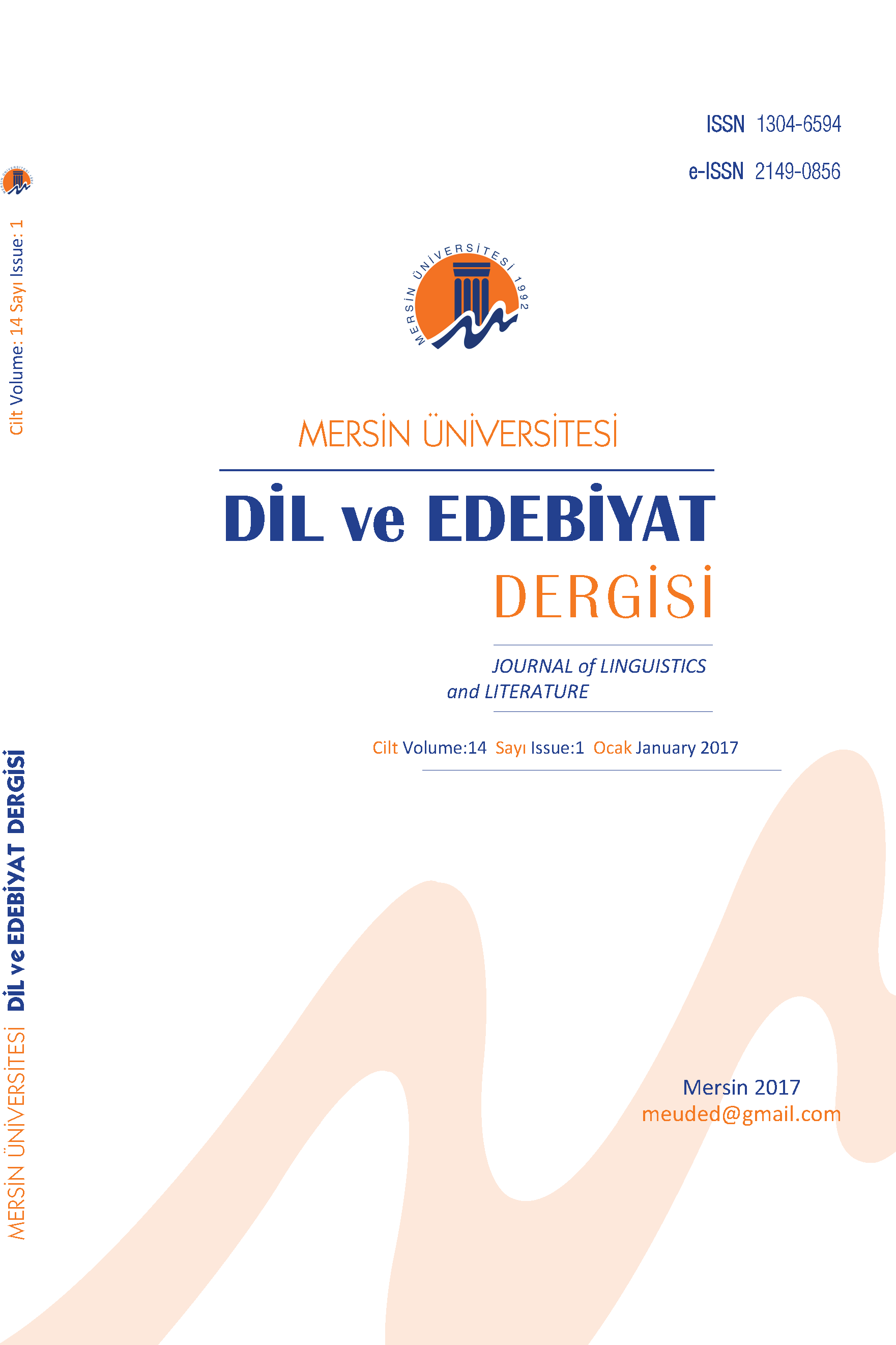Televizyon Dizilerinde Sesli Betimleme: Çokkipli Derleme Dayalı Çözümleme İçin Bir Keşif Çalışması
Bu çalışmanın amacı, televizyon dizileri için hazırlanan sesli betimleme (SB) metinleri temel alınarak bir çokkipli derlem oluşturulduğu takdirde dilbilim alanında ele alınabilecek araştırma konularını anahatlarıyla ortaya koymaktır. Engelsiz TRT internet sitesinden rastgele seçilmiş, ortalama ikişer dakikalık 34 dizi kesitinde dış ses olarak işitilen SB metinlerinin çevriyazısı yapılarak toplam 2789 sözcük ve 476 SB birimi içeren bir derlem oluşturulmuştur. Ses (örn. söyleyiş, sözcük vurgusu ve ezgi), biçim (örn. zaman/görünüş ve durum ekleri), sözcük çeşitliliği (örn. 879 başsözcüğün ulam ve anlama göre dağılımı) ve tümce yapısı (örn. ad, sıfat ve belirteç görevli yantümceler) gibi çeşitli düzeylerde bulgular sunulmuştur. Çokkipli derleme dayalı çözümleme yöntemi, özellikle göstergelerarası bağdaşıklığı (örn. SB birimlerinin özgün görsel-işitsel ürünün görsel göstergeleriyle etkileşimi) irdelemeye uygun görünmektedir.
Anahtar Kelimeler:
Sesli Betimleme, Çokkipli Derlem, dilbilimsel çözümleme
Audio Description On Television Series: Scouting Before An Analysis Based On A Multimodal Corpus
The aim of this study is to point out possible topics for linguistic research using a multimodal corpus based on audio description (AD) texts created for television series. A 2789-word/476-unit corpus was built by transcribing the AD texts (heard as voice-off audio) on 34 clips (with an average duration of 2 minutes) randomly selected from among the television series available on the Engelsiz TRT website. We present a number of findings on various levels, such as phonology (e.g. pronunciation, word stress and intonation), morphology (e.g. tense/aspect and case endings), lexical variety (e.g. distribution of 879 lemmas based on category and meaning) and syntax (e.g. nominal, adjectival and adverbial clauses). As a method, multimodal corpus analysis seems to be especially appropriate for studying intersemiotic coherence (e.g. the interaction of AD units with the visual signs of the original audiovisual product).
Keywords:
Audio Description, Multimodal Corpus, Linguistic Analysis,
___
- Allwood, J. (2008). Multimodal Corpora. A. Lüdeling & M. Kytö (haz.) Corpus Linguistics: An International Handbook (s. 207-225). Berlin: Mouton de Gruyter.
- Benecke, B. (2004). Audio-Description. Meta, 49 (1), 78-80.
- Delabastita, D. (1989). Translation and mass-communication: film and TV translation as evidence of cultural dynamics. Babel, 35 (4), 193-218.
- Jimenez Hurtado, C. & Soler Gallego, S. (2013). Multimodality, translation and accessibility: a corpus-based study of audio description. Perspectives, 21 (4), 577-594.
- Salway, A. (2007). A Corpus-based Analysis of Audio Description. J. Díaz-Cintas, P. Orero & A. Remael (haz.) Media For All: Subtitling For The Deaf, Audio Description And Sign Language (s. 151-174). Amsterdam: Rodopi.
- Snyder, J. (2008). Audio description: The visual made verbal. J. Díaz Cintas (haz.) The Didactics of Audiovisual Translation (s. 191-198). Amsterdam: John Benjamins.
- ISSN: 1304-6594
- Yayın Aralığı: Yılda 2 Sayı
- Başlangıç: 2004
- Yayıncı: Mersin Üniversitesi
